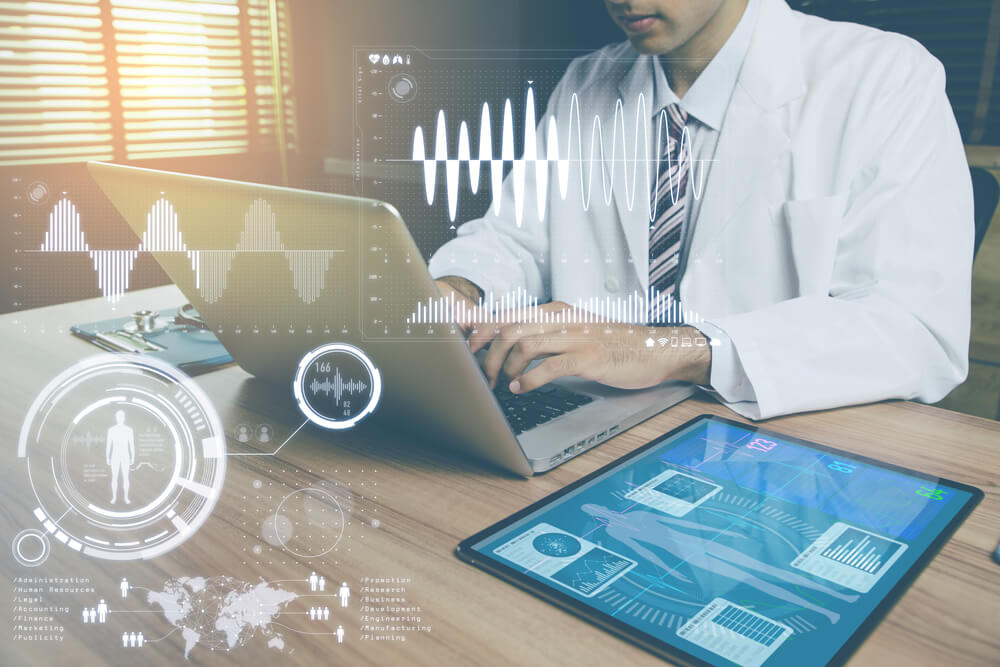



Get new exclusive access to healthcare business reports & breaking news




Providence St. Joseph Health is working closely with a pair of digital health startups to provide remote monitoring technology for coronavirus patients.
The Washington-based health system is on the frontlines, treating huge numbers of patients who are at risk of contracting or who have been diagnosed with the COVID-19 virus. This is because of the virus’s profound impact on Seattle, an epicenter of the virus.
Providence St. Joseph is working with Xealth, a digital prescription platform. The two companies teamed up to launch startup Twistle’s remote monitoring and care automation tools in just four days.
Various health systems are currently using the Twistle app to not only check in with patients, but also to monitor adverse health trends. Xealth is providing Providence the basic platform for integration and automation into the provider’s electronic medical record workflow.
Providence is using the innovative platform to monitor more than 700 presumptive or positive COVID-19 patients. This allows the patients to remain at home, thus preventing additional strain on local hospitals and emergency rooms.
COVID-19 patients who have a few, mild symptoms but are well enough to remain home, are given a pulse oximeter and a thermometer, and using the Xealth/Twistle technology, they are monitored from their home by Providence’s remote patient monitoring team.
“In the present environment, we have a large number of patients who are experiencing symptoms and are concerned, who may or may not have COVID-19,” said Todd Czartoski, M.D., Providence’s chief medical technology officer. “Incorporating Twistle and Xealth into our clinical work increases the reach of our front-line caregivers, thus enabling us to give them the ability to monitor patients efficiently and effectively, while keeping patients safe at home.”
Providence has also developed a digital strategy that includes a COVID-19 microsite to help educate patients, as well as a self-assessment tool dubbed Grace, and finally, virtual visits through the care provider’s Express Care Virtual.
Healthcare leaders say the ongoing pandemic may only be the launch point for remote monitoring technologies.
Boston-based startup Biofourmis intends to use its wearable AI technology to assist with COVID-19 surveillance in Hong Kong, to help researchers understand the virus, which originated in mainland China.
Two-thousand front-line healthcare workers have been given Oura smart rings at the University of California, San Francisco, to help detect symptoms of COVID-19. Likewise, Scripps Research Translational Institute has set up an app-based study to analyze data from activity trackers and smartwatches to see whether this data can help detect the symptoms of the flu, coronavirus as well as other fast-spreading viruses.
Many health care providers are already using wearables, sensors and connected devices to monitor patients with specific chronic conditions.
“We’re seeing the use of remote patient monitoring speed up. This is compelling institutions to quickly ramp up these programs and explore ways to build a connected health experience for a much broader audience,” said Arielle Trzcinski, senior analyst, application development and delivery professionals, at Forrester.
Validic, a digital health company, has worked in this field for 10 years. Validic provides a platform that connects health care providers with the data gleaned from smartwatches and other wearables. The company’s platform connects with over 450 in-home devices, wearables, and health apps.
“We’re seeing more interest coming from health care systems to move quickly to monitor for specific symptoms of COVID-19. That’s in terms of monitoring both patients and personnel, as well as front-line staff,” remarked Drew Schiller, CEO of Validic.
To meet the demand for this technology, Validic launched a COVID-19 rapid deployment remote monitoring tool for both healthcare providers and employers. That tool can be launched the same day, with no integration required. The tool can also support data entered manually.
The Validic platform can monitor body temperature, cough frequency, difficulty breathing, and oxygen saturation.
“The current pandemic has highlighted that virtual care in general, and specifically, remote patient monitoring are a must-have for the future of healthcare,” Schiller said.
Remote monitoring is needed to free up capacity for a health system that’s already stressed, Arielle Trzcinski pointed out. While inpatient hospital teams focus on COVID-19 patients, health care systems can use connected devices and wearables to monitor and manage those with chronic conditions safely from their homes.
Telehealth also plays a big role on the frontlines of the COVID-19 response. Telehealth can screen and triage patients from anywhere in the world. Technology that monitors patients are an important tool at the back end. It enables health care professionals to manage patients outside of the clinical environment, states Rene Quashie, vice president of digital health at the Consumer Technology Association.
“What we experienced with Italy is that all of the care was centered in the hospitals. We saw an amazing increase in both the infection rate and death rate. Thus, remote patient monitoring can play a big part in keeping hospital beds open for admissions and then using technology to monitor patients who have been sent home,” he said.
The Centers for Medicare and Medicaid Services has decided to increase reimbursement for the use of wearables and other technology during the ongoing pandemic. CMS made it clear that clinicians can provide remote patient monitoring services to those with acute conditions as well as chronically ill patients. For instance, remote patient monitoring can be used to monitor a COVID-19 patient’s oxygen levels using pulse oximetry.
“We have also seen commercial insurers cover payments for chronic disease and I expect they will also start to cover acute patients being monitored, since they generally follow whatever CMS is doing,” Schiller said.
Healthcare leaders predict that the current implementation and reimbursement for wearables and related technology ensure these will become a permanent part of how healthcare is delivered in the future.
“This is really just the tipping point for digital health,” Quashie said.